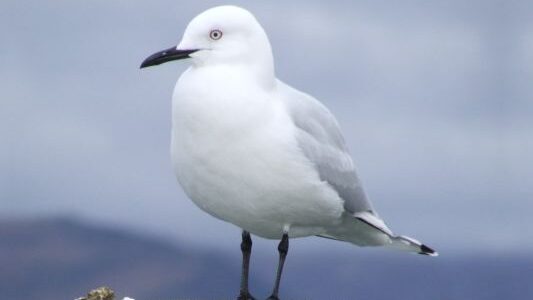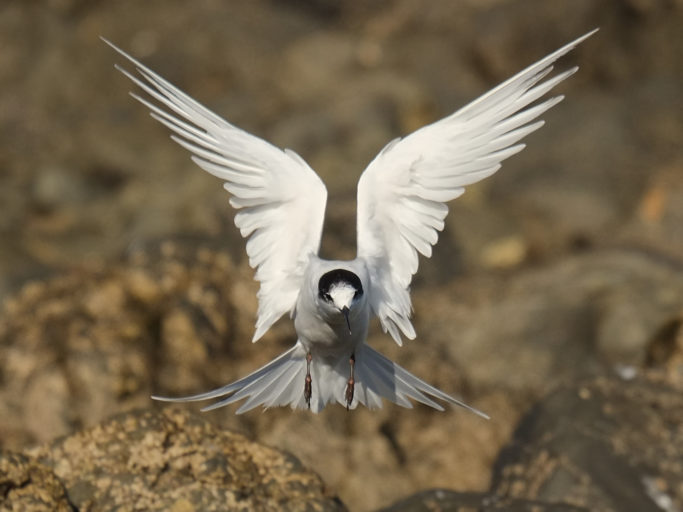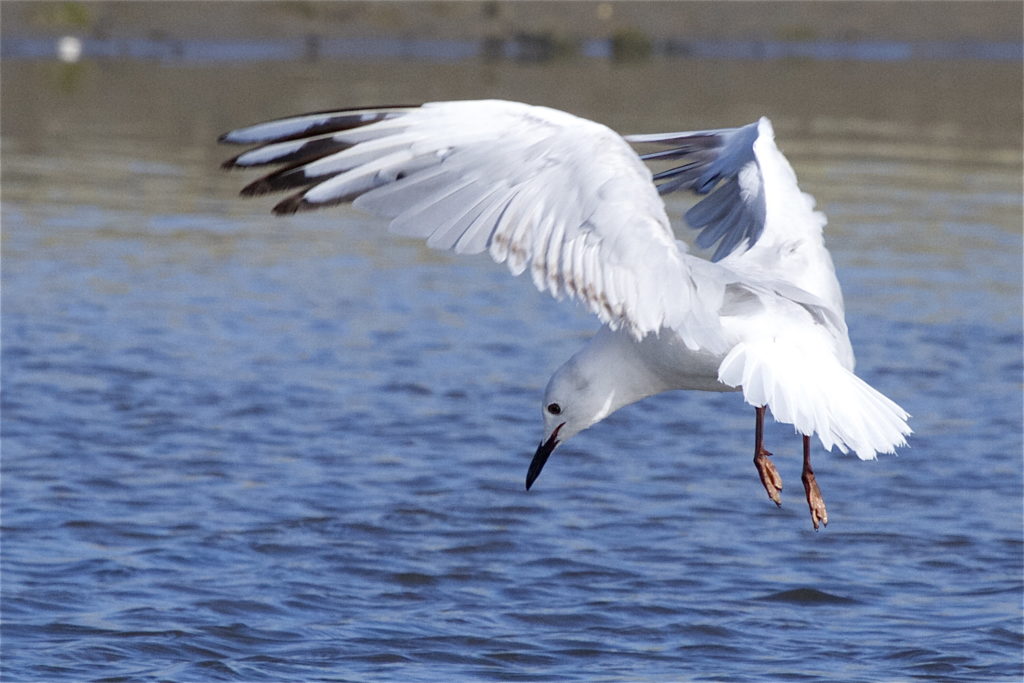The Ashburton/Hakatere River mouth in Mid Canterbury is a nesting site for large colonies of black-billed gulls and white-fronted terns and proved an ideal study site for testing the bird census capabilities of an Unmanned Aerial Vehicle (UAV) compared to more traditional bird count methods.

When the results came in, the researchers made a bonus discovery: the Hakatere black-billed gull colony was the single largest black-billed gull colony recorded in New Zealand since the mid 1990’s. The research was carried out in 2017 by Mike Bell and Paula Harborne from Wildlife Management International Ltd and recently published. Two independent methods were used to measure the size of the colonies: extrapolation from nest plots and counts from aerial photos recorded from an Unmanned Aerial Vehicle.
“Aerial photography has been used to count a range of colonial nesting seabirds in New Zealand; including gulls, shags, gannets and albatross species. Recent innovations in Unmanned Aerial Vehicle (UAV) platforms with improvements and miniaturisation of navigation tools and cameras has revolutionised ecological studies. However, the use of UAV’s to census colonial breeding seabirds has not been reported from New Zealand. Here we test the use of a UAV to census two large colonies of a gull and tern species.”
In mid-October 2017 a large colony of black-billed gull established on the left bank of the Ashburton River/Hakatere River mouth, directly below the bluffs adjacent to the Hakatere Huts. At the same time, a similarly large colony of white-fronted tern formed on the opposite right bank, at the base of the gravel spit that encloses the lagoon.

First the colonies were measured using by extrapolation from nest plots.
“The perimeter of each colony was measured using a handheld Garmin Map64St GPS by walking around the edge of the colony holding the GPS over the outermost nests on 12 November 2017. These data were uploaded to ArcView to create a polygon used to calculate colony size. To determine nest density, a series of non-overlapping 0.375 m radius circular plots (each 0.45 m²) were carried out along a transect running through the centre of the colony, and the number of nests counted in each. Mean nest density was calculated, and the number of breeding pairs in the two colonies estimated by extrapolating this density across the area of each colony.”
These results were compared with an aerial survey of each colony using a UAV (DJI Phantom 3), on the same day, just 2 hours after the completion of nest plot counts.
“The UAV flew 5–7 transects over each colony at a height of approximately 100m. Neither the black-billed gulls nor the white-fronted terns reacted to the UAV. The resulting images were digitally stitched together using Adobe Photoshop to provide a photomosaic of the entire colony. These aerial photographs were counted using ImageJ, an open source image processing program designed for scientific images. Each image was worked through systematically, during which all Apparently Occupied Nests (AON), and additional birds within and outside the nesting area, were counted.”
“The area of the black-billed gull colony was calculated to be 1,555 square metres. From 50 nest plots laid out through the colony, we calculated a mean nest density of 5.02 nests per square metre. Extrapolating from this the black-billed gull colony is estimated to be 7,807 nests (95% confidence interval 7,088–8,526).”
In comparison, using the UAV method, a total of 7,485 Apparently Occupied Nests were counted on the aerial photograph of the black-billed gull colony.

“An additional 1,305 birds were counted within the nesting area, and a further 646 birds were recorded outside the nesting area. For the black-billed gull colony, the 95% confidence interval is 7,315–7,655.”
In 2018, the national population of black-billed gull was estimated to be 60,000 breeding pairs, showing just how significant the Hakatere colony is.
“Since the mid 1990’s the Ashburton River has supported a significant breeding population. This colony appears to be the single largest black-billed gull colony recorded in New Zealand since the mid 1990’s.”
“The size of the white-fronted tern colony was calculated to be 1,651 square metres. From 40 nest plots taken through the colony mean nest density of 3.72 nests per square metre was recorded. Again, extrapolating from this the white-fronted tern colony was estimated to be 6,145 nests (95% confidence interval 5,400–6,891).”
A total of 5,746 Apparently Occupied Nests were counted from the aerial photograph of the white-fronted tern colony. Another 334 birds were recorded within the nesting area, and none outside. The 95% confidence interval of this count was 5,597–5,895.

“White-fronted tern is the commonest tern in New Zealand; colonies of several thousand birds have been recorded, but most colonies are 50–200 pairs. This colony of 6,000 breeding pairs is likely to be the largest colony of this species recorded.”
The 2017 census was good news for Mid-Canterbury’s nesting seabird colonies and a positive result for the use of UAVs as a census tool. UAVs are also less disruptive to the birds themselves.
“The results of aerial photography and nest plots gave similar results and show that both methods are suitable for determining the colony size of these species. Counts from aerial photos were 94–96% of colony size estimates from ground counts. The flight of a UAV over the breeding colony caused no disturbance to the breeding birds, whereas counting the nest-density plots created short-term disturbance because of the need to enter the colonies to measure nest densities. Our study confirms the UAV’s value for producing accurate counts while having little impact on densely nesting colonial seabirds.”
“With the continued advances in camera and drone technology, in combination with increasingly sophisticated image analysis software, it is now possible for investigators involved in monitoring bird populations to save time and resources by increasing their use of computer-automated bird detection and counts from digital aerial images. These methods have not been tested in braided river systems and would be a useful area of further research.”

